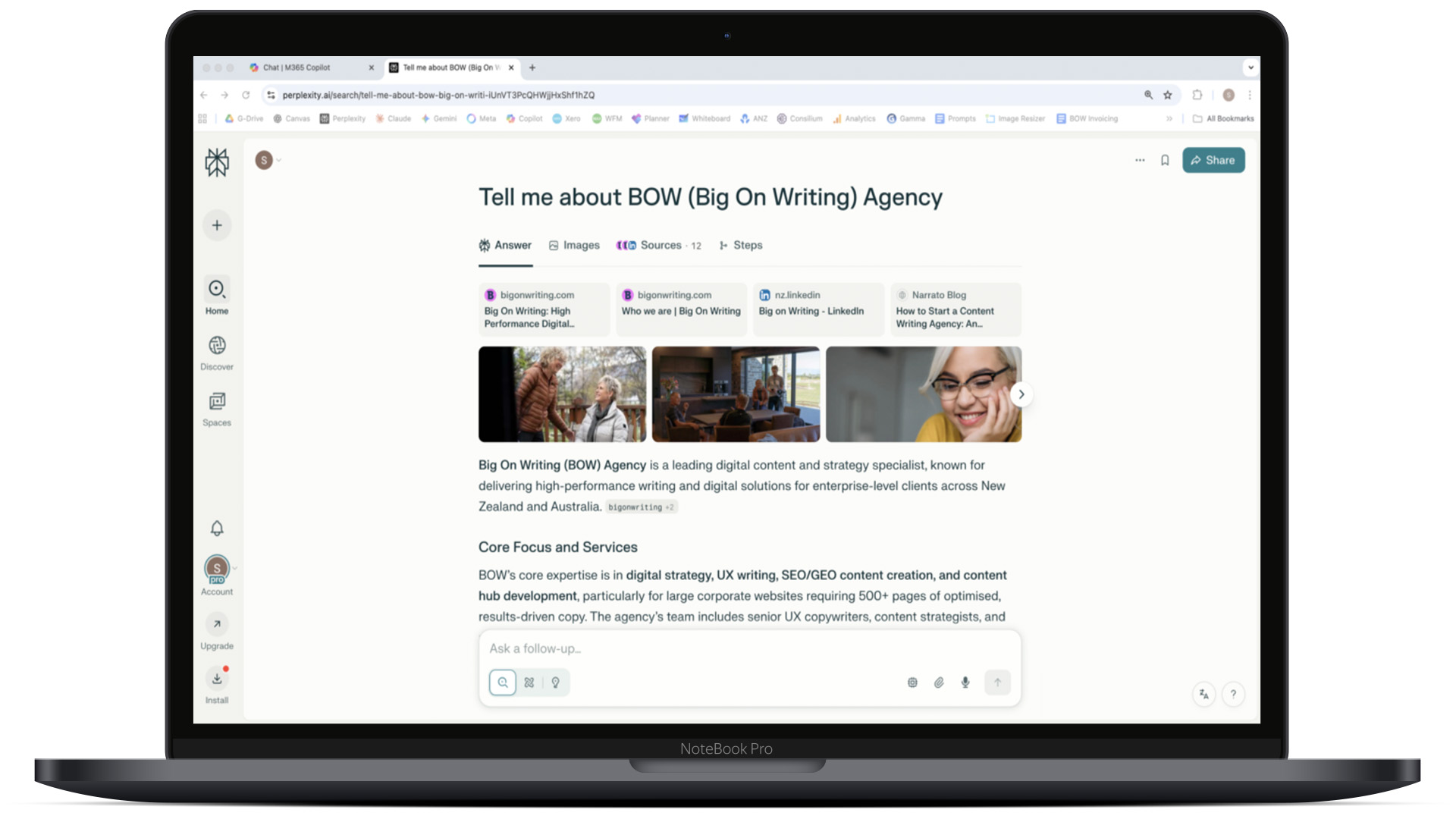

How do I get my brand to show up in AI summaries and overviews? It’s the question on everyone’s lips in 2025.
AI is no longer the future - it’s here, embedded in our daily search habits. From LinkedIn threads to news feeds, AI is dominating conversations everywhere. And in the world of search, the pace has picked up dramatically.
Generative AI overviews are now appearing at the top of results, answering queries instantly, and changing how we discover and engage with content.
In our last article, SEO vs GEO: How AI Is Changing Search, we explored the shift from traditional SEO (Search Engine Optimisation) to GEO (Generative Engine Optimisation). This time, we’re diving into what it means for your website and how to prime your content so it’s AI-friendly, discoverable, and ready to be cited in generative search results.

AI visibility means how prominently your brand appears in AI-generated summaries, overviews, and conversational results. Unlike SEO, where rankings matter, AI visibility is about being cited as a trusted source in machine-generated answers.
As to what you call this, it's a moving feast! The most popular term currently is GEO but AEO (Answer Engine Optimisation) is also a legitimate term, as is AIO.
The takeaway? If your website isn’t GEO-optimised, you risk becoming invisible.

Let’s be honest: probably not.
Most websites were written for humans first and Google’s algorithm second. GEO adds a third audience: machines. Your content now needs to be clear enough for humans, but also structured enough for AI systems to read, understand, and reuse.
To appear in AI summaries, your content needs to be clear, structured, and backed by authority signals like citations and the author’s name. AI tools prioritise content they can parse and trust.
Don’t panic. The good news is you don’t have to rebuild your entire website. You do need to rethink how your existing content is written, structured, and maintained. Here’s how to start.
To make your website AI-friendly, start with a content audit that improves readability and structure. This ensures AI engines can scan, understand, and cite your pages accurately.
Think of this as housekeeping for AI: tidy up your site so it’s easy to scan, segment, and cite.
Article schema is a type of structured data or 'guide' that tells search engines (and now AI systems) key details about your content, including things like the headline, author, date published, and description.
By marking up your articles with schema, you make it easier for AI to recognise your content as authoritative and pull it into summaries.
The simplest way to add schema is by using JSON-LD (a script you paste into your page’s code) or a plugin if you’re on WordPress. For this article, we simply asked ChatGPT to generate the schema below:

AI isn’t scanning for keywords — it’s mapping meaning. To help it along:
(In fact, we have hilarious proof of this. A few years ago Sue sat beside Scott Robertson on the plane. They had a great yarn and Sue wrote up a tale about it. That story is still our top-ranking SEO story and is now getting another round thanks to GEO!)

Trust signals matter more than ever. Generative engines want content that looks credible.
Generative engines prefer content they can structure easily. That means:

Well-written content is an important part of GEO but technical housekeeping still matters. Check for:
Once your content is restructured, test how it performs in the new AI landscape. The GEO tools are evolving so fast and it depends on what you are looking for. As writers, bluntly, we want tools that score our work and suggest improvements, although sometimes we disagree!
Here are some of our favourite tools:
What tools are you using? Let us know, and tell us why you like them.
GEO might sound technical, but at its core it’s about writing. Clear explanations, well-structured formats, and authoritative signals are what make your content shine in AI overviews.
Search is changing fast. But here’s the opportunity: while others scramble to game the algorithm, you can focus on writing content so useful, clear, and credible that both humans and machines can’t ignore it.
At Big On Writing, that’s exactly what we do. We help brands craft content that’s not only optimised for SEO, but ready for the AI-driven search landscape. Because in 2025, well-written words aren’t just good marketing, they make sure you’re seen.